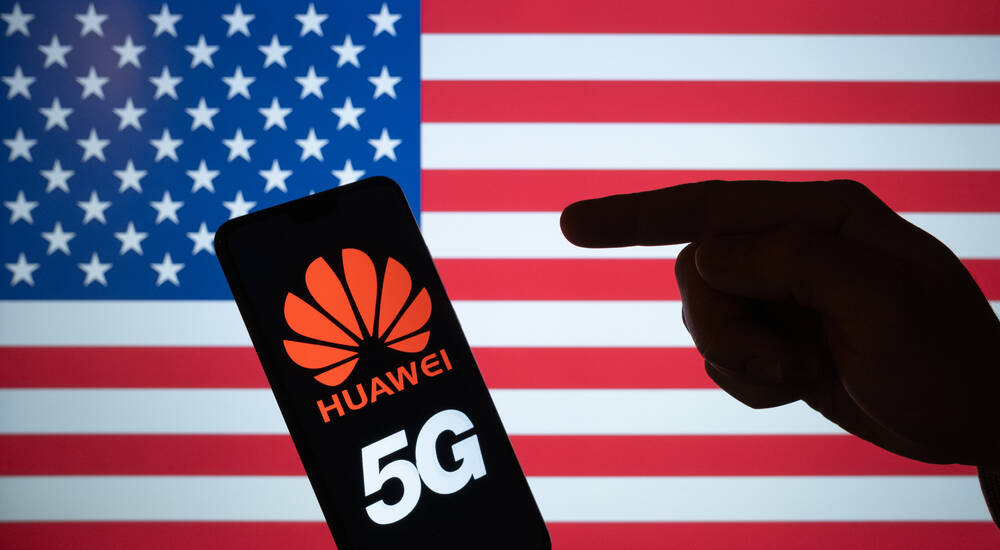FCC Officially Opens Its $1.9bn Purse To Reimburse Those Ripping Out And Replacing Huawei, ZTE Kit

The FCC is now accepting reimbursement requests from companies in the US that are ripping out and replacing their now-unwelcome Chinese Huawei and ZTE networking equipment.
Small to medium-sized companies with fewer than ten million customers can ask the American watchdog to cover the costs of removing, replacing, and disposing of the gear. Organizations have until January 14, 2022 to apply for a slice of the FCC’s $1.9bn Secure and Trusted Communications Networks Reimbursement Program.
As a reminder, in December telcos and similar outfits were strong-armed into agreeing to extract and replace Huawei and ZTE technology in their networks on the grounds of maintaining national security. US communications providers had to fall in line with this order, and dump their Chinese boxen, if they wanted to tap into the FCC's Universal Service Fund, a subsidy they pretty much all rely on. Thus, the carriers and co had little choice.
“Trust in our communications systems is fundamental, and to preserve that trust we need to identify threats and mitigate risk,” FCC chairwoman Jessica Rosenworcel said in a statement [PDF] at the end of last week.
“Removing insecure equipment from existing networks after installation is challenging. This program is here to help. We also want our communications companies to have the opportunity to use promising and innovative alternatives, like interoperable open radio access network solutions, as we build tomorrow’s networks.”
Only equipment procured from Huawei and ZTE on or before June 30, 2020 are eligible for reimbursement.
- China Telecom booted out of USA as Feds worry it could disrupt or spy on local networks
- Q2 2022 should see networking sales boom – when payouts to replace Huawei and ZTE kit start to flow
- Huawei CFO Meng Wanzhou admits lying about Iran deal, gets to go home
- Chinese developers rebel against long working hours with crowdsourced tell-all on employers
The Secure and Trusted Communications Networks Reimbursement Program emerged from the Secure Networks Act that was introduced in 2019 and passed by Congress the following year. Lawmakers and government officials expressed concerns that 5G networks powered by Huawei and ZTE kit may include hidden backdoors demanded by Beijing granting the Middle Kingdom easy access to American citizens' communications. And it had absolutely nothing to do with Cisco and other American vendors competing against Huawei. Nope, not at all.
Compensation applications will need to include a dollar value on the cost of ripping'n'replacing the Chinese equipment, and payments are due to go out in the second quarter of 2022 if approved.
It’s not just telecommunications providers and network carriers that are eligible. The US government wants the equipment removed from schools, libraries, and even healthcare orgs that use Huawei or ZTE’s hardware to provide connectivity. Basically, anyone that provides a fixed or mobile broadband connection to end users with at least 200kbps in one direction.
A Huawei spokesperson previously told The Register the mega-manufacturer was “disappointed” with the FCC’s project. “The so-called ‘Rip & Replace’ rules are simply an unrealistic attempt to fix what isn’t broken,” they said. ®
From Chip War To Cloud War: The Next Frontier In Global Tech Competition
The global chip war, characterized by intense competition among nations and corporations for supremacy in semiconductor ... Read more
The High Stakes Of Tech Regulation: Security Risks And Market Dynamics
The influence of tech giants in the global economy continues to grow, raising crucial questions about how to balance sec... Read more
The Tyranny Of Instagram Interiors: Why It's Time To Break Free From Algorithm-Driven Aesthetics
Instagram has become a dominant force in shaping interior design trends, offering a seemingly endless stream of inspirat... Read more
The Data Crunch In AI: Strategies For Sustainability
Exploring solutions to the imminent exhaustion of internet data for AI training.As the artificial intelligence (AI) indu... Read more
Google Abandons Four-Year Effort To Remove Cookies From Chrome Browser
After four years of dedicated effort, Google has decided to abandon its plan to remove third-party cookies from its Chro... Read more
LinkedIn Embraces AI And Gamification To Drive User Engagement And Revenue
In an effort to tackle slowing revenue growth and enhance user engagement, LinkedIn is turning to artificial intelligenc... Read more

